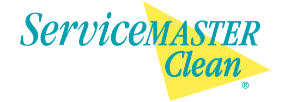.jpg)
Public awareness has caused growing concern about indoor mold and mildew in the workplace. OSHA and CDC have both issued comprehensive guides and information packets on mold and mildew in homes and workplaces.
Mold is basically fungi that thrive in moist, damp, and humid conditions. They can easily grow both indoors and outdoors if the growing conditions are right. They spread by releasing spores in the air that latch onto other humid and damp places. They can survive harsh conditions and have bad effects on humans and other living beings breathing the spore-filled air.
Mold Effects on People
Depending on the type of mold and the intensity of its presence, mold can have mild to serious implications for humans and animals. The spores can actually lead to many respiratory issues.
Common symptoms of mold exposure include wheezing, itchy and red skin, irritated eyes, and a stuffy nose. People with allergies and conditions like asthma can have more serious reactions to the spores.
Before diving into discussing preventative measures, it’s important that you get mold remediation services as soon as you notice signs of mold at your workplace. Common signs include a damp-musty smell that doesn’t go away, people having breathing difficulties, and visible dark brown, black or green spots in the bathrooms, kitchens, or other damp spots around the office building.
If your walls, ceilings, and floors are clean, the mold might be growing in the HVAC ducts. If you suspect the presence of mold, get a contractor to come have a look and test your workplace. Immediate action can protect your employees’ health and the structural integrity of your building.
Prevention
According to the OSHA guide, moisture control and cleanliness are the two main ways of preventing mold and mildew in the workplace.
Make sure you get plumbing faults and leaks fixed as soon as you find them.
Look for wet spots around the office, especially in rooms that are next to or below bathrooms.
Getting the HVAC system checked and maintained regularly.
Scheduling an annual or biannual mold check for your office building.
Maintaining indoor humidity between 25% and 60%. You can use dehumidifiers and improve natural ventilation.
Maintaining a thorough cleaning routine.
ServiceMaster Clean doesn’t offer mold cleaning services but we can help prevent mold and mildew with regular cleaning services. Since we clean thoroughly, we often see spots on walls, ceiling, and floors that are often missed by busy employees. This way, we can help identify any presence of mold or mildew that you might have ignored until it got worse, enabling you to take immediate action.

